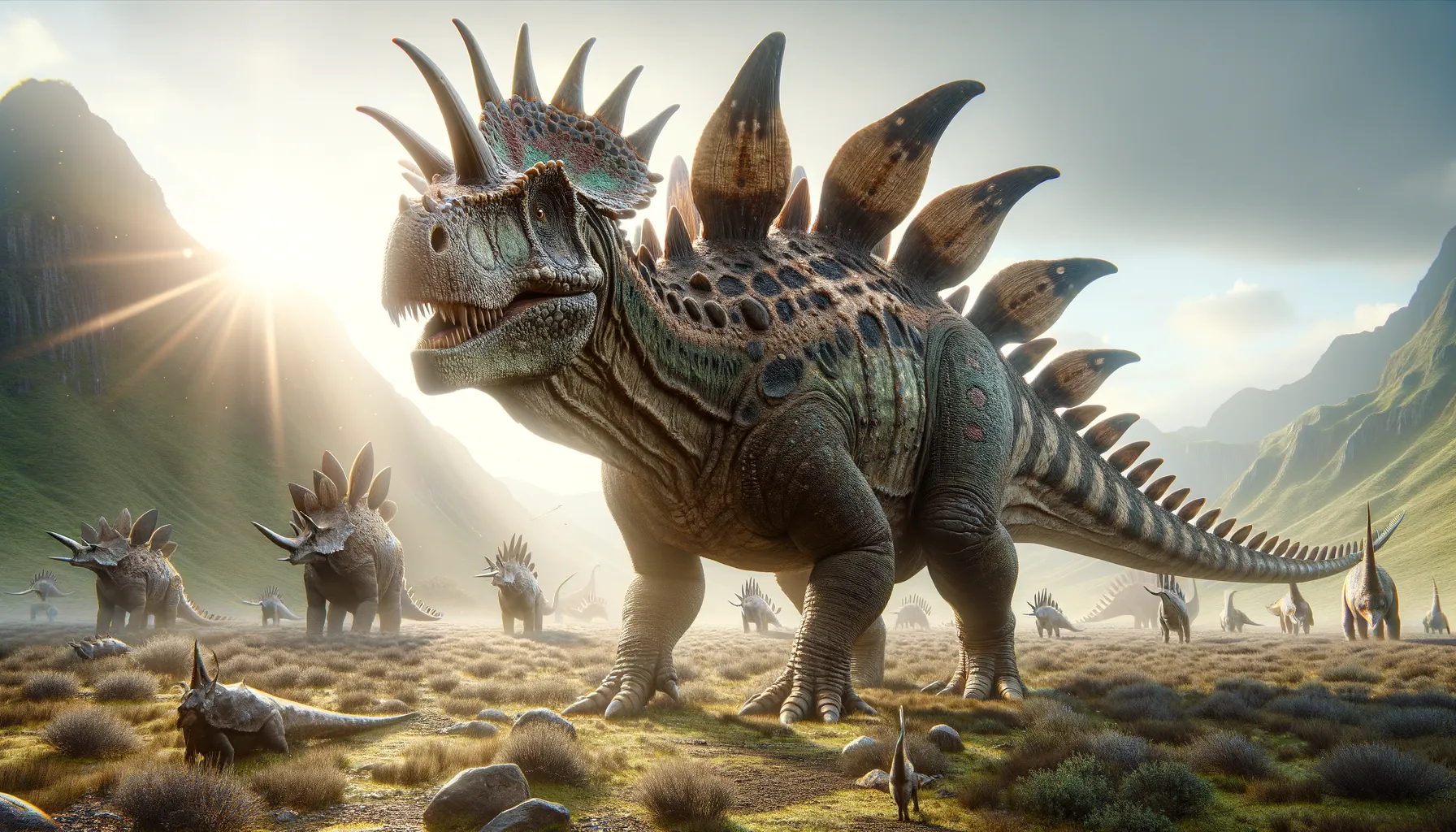
Gigantspinosaurus
Armored wonder from the Jurassic past.
Period
Jurassic
Length
Roughly 4.2 meters long.
Height
About 2 meters tall.
Weight
Approximately 2 tons.
Gigantspinosaurus was a remarkable dinosaur known for its distinctive shoulder spines and armored body. It lived during the Late Jurassic period, approximately 160 million years ago, in what is now China. This herbivorous dinosaur is a member of the stegosaur family, characterized by its unique combination of plates and spikes. Its impressive armament likely served as protection against predators, making it a fascinating subject of study for paleontologists interested in dinosaur defense mechanisms.
Diet
Gigantspinosaurus was an herbivore, meaning it fed primarily on plants. It likely consumed a variety of leafy greens and low-lying vegetation, using its beak-like mouth to clip foliage.
Hunting
As an herbivore, Gigantspinosaurus did not hunt other animals. Instead, it foraged in its environment for suitable plant material, likely grazing on ferns and cycads common during the Jurassic period.
Environmental challenges
Gigantspinosaurus lived during a time when the climate was warm and semi-arid, presenting challenges such as occasional droughts. Its armored body and spikes may have been used to deter predators, but it still needed to find ample vegetation to sustain itself. Competition for food resources with other herbivores could have affected its survival.
Speed
Believed to be slow-moving.
Lifespan
Estimated to be several decades.
First discovery
Found in China in 1983 by Hao Qing-Wen.
Fun Facts
- Gigantspinosaurus lived during the Late Jurassic period, around 160 million years ago, in what is now known as China.
- This dinosaur is named for its large shoulder spines, which are much longer than any other stegosaur's spikes.
- Despite its impressive-looking armor, Gigantspinosaurus was a plant-eater, relying on its long neck to reach vegetation.
- It was smaller than some of its relatives, like Stegosaurus, measuring around 4.5 meters (about 15 feet) long.
- The large shoulder spines of Gigantspinosaurus were likely used for display or defense against predators.
- Fossils of Gigantspinosaurus were first discovered in the Sichuan Basin in China in the 1980s, but it was formally named and described in 1992.
- Gigantspinosaurus had a relatively small head and brain compared to its body size, characteristic of many stegosaurians.
Growth and Development
The growth rate of Gigantspinosaurus is not precisely known, but like other large herbivores, it may have experienced a slower, steady development. Juvenile dinosaurs might have been vulnerable to predation, making the adult spines and armor crucial for survival. Over time, the distinct shoulder spines became more prominent as the dinosaur matured, providing better defense capabilities.
Habitat
Gigantspinosaurus inhabited dense forests and open plains in what is now China. Its environment consisted of lush vegetation, providing abundant food sources. The dinosaur likely lived in areas with access to water and a variety of plant life to support its herbivorous diet.
Interaction with other species
Gigantspinosaurus coexisted with various other dinosaur species, including predators and fellow herbivores. Its armored body was an adaptation for defending against carnivorous threats. Despite its protective features, competition for resources with other herbivores may have been a common occurrence, influencing its feeding habits and territorial behavior.
Natural lifespan
Gigantspinosaurus likely lived up to several decades in the wild.
Reproduction
The reproduction of Gigantspinosaurus was likely similar to other stegosaurs, involving egg-laying. Nests may have been constructed in secluded areas with soft soil to protect the eggs. Parental care, if present, would have been crucial for the survival of hatchlings, though direct evidence of this behavior is limited.
Social behaviour
While specific social behavior of Gigantspinosaurus remains speculative, it might have lived in small groups for increased protection against predators. Such grouping behavior would have facilitated the sharing of resources and protection for young members of the species. Interactions within the group could have involved displays using their distinctive spines.
Fossil locations
The primary fossil site for Gigantspinosaurus is located in Sichuan Province, China. This region has yielded several important dinosaur fossils, providing insight into the diverse prehistoric life that once inhabited the area. Discoveries in this location have helped researchers piece together the ecosystem of the Jurassic period.
